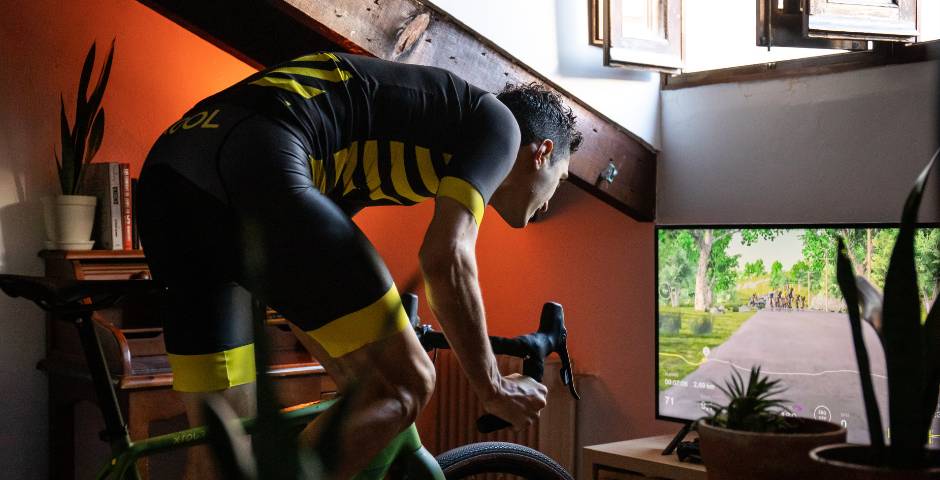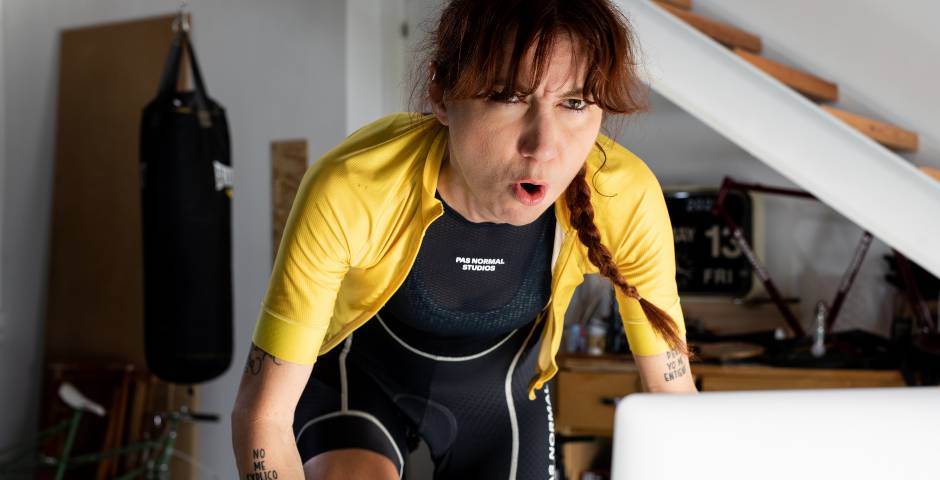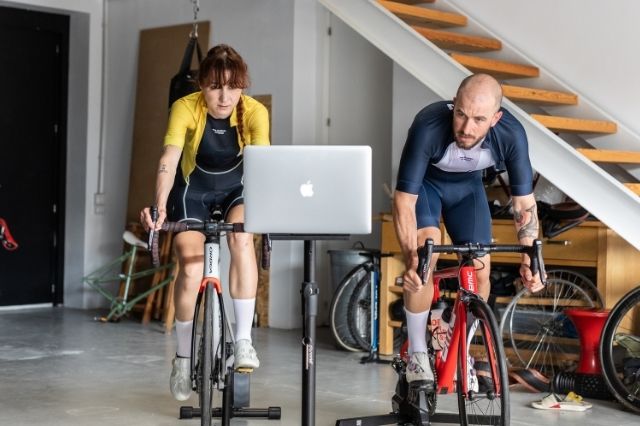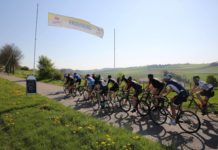Indoor cycling, thanks to platforms like BKOOL, allows us to train at home, regardless of the weather or outdoor conditions, without neglecting fun. As in any other circumstance, training variability is essential to achieve optimal performance and avoid plateauing. In this article, we’ll explore the types of sessions you should include in your weekly trainer training plan.
Resistance sessions
Resistance sessions are essential to develop aerobic capacity and improve pedaling efficiency. These sessions consist of pedaling at a moderate pace for prolonged periods, generally between one and three hours. In the case of training on the Smart trainer, you can adjust the resistance of the Smart trainer to simulate different ground conditions and thus work different muscles. It is advisable to perform at least one resistance session per week.
An example of resistance training is as follows:
- Warm-up: 15 minutes of easy pedaling
- Resistance: 90 minutes of pedaling at a moderate and steady pace, adjusting the resistance of the trainer to simulate smooth ascents and descents
- Cool down: 10 minutes of easy pedaling
Interval training
Interval training is a great way to improve power and anaerobic endurance. These consist of alternating periods of intense effort with periods of active recovery or rest. Intervals can vary in length, from short 30-second sprints to multi-minute efforts. Be sure to include at least one interval session per week in your training plan.
An example of interval training is the following:
- Warm-up: 10-15 minutes of easy pedaling
- Intervals: 5 sets of 3 minutes at high intensity, followed by 3 minutes of active recovery
- Cool down: 10-15 minutes of easy pedaling

Strength training
Although indoor cycling does not involve the same degree of strength work as outdoor cycling, it is important to strengthen the specific muscles used in pedaling. Strength training on the Smart Trainer can consist of increasing resistance and performing sets of low cadence (50-60 RPM) for several minutes. These sessions will help improve leg strength and pedaling efficiency. Try to incorporate at least one strength session a week.
An example of strength training is the following:
- Warm-up: 15 minutes of easy pedaling
- Strength: 4 sets of 5 minutes with high resistance and low cadence (50-60 RPM), followed by 5 minutes of active recovery (easy pedaling)
- Cool down: 10 minutes of easy pedaling
Recovery sessions
Recovery sessions are just as important as intense training sessions, as they allow the muscles to repair themselves and adapt to the effort. During these sessions, ride at a low intensity for 30-60 minutes, concentrating on pedaling technique and cadence. Active recovery is essential to avoid overtraining and ensure steady progress. Dedicate at least one or two days a week to recovery.
An example of recovery training is as follows:
- 45 minutes of low intensity pedaling, focusing on pedaling technique and cadence
- technique sessions
Training on the Smart Trainer also provides the chance to work on pedaling technique, which can make all the difference in terms of efficiency and injury prevention. These sessions can include leg isolation exercises (such as single leg pedaling), working on high cadence, and focusing on body position on the bike. Correct pedaling technique allows for more effective power transfer and reduced risk of injury. Incorporate at least one technique session into your weekly schedule.
An example of recovery training is as follows:
- Warm-up: 15 minutes of easy pedaling
- Technique: 4 sets of 5 minutes focusing on different technical aspects, such as pedaling with one leg, maintaining proper body position and improving the roundness of the pedal stroke
- Cool down: 10 minutes of easy pedaling
Cadence workouts
Cadence is another crucial aspect in cycling, as it influences efficiency and muscle fatigue. In general, a cadence of 90-100 RPM is recommended for most riders, but it’s important to tailor it to your own needs and riding style. Cadence workouts on the trainer can include cadence shifts, where you alternate between high cadence (above 100 RPM) and low cadence (around 70 RPM). These workouts help improve efficiency and the ability to change cadence based on trail conditions. Try to include a cadence session in your weekly training plan.
An example of recovery training is as follows:
- Warm-up: 15 minutes of easy pedaling
- Cadence: 6 sets of 5 minutes alternating between high cadence (110-120 RPM) and low cadence (70-80 RPM), with 2 minutes of active recovery between each set
- Cool down: 10 minutes of easy pedaling

Conclusion
Variability in indoor cycling training is critical to achieving consistent progress and maintaining motivation over time. By incorporating endurance, interval, strength, recovery, technique, and cadence sessions into your weekly training plan, you’ll ensure a well-rounded, balanced approach to achieving your goals as a cyclist.
Also, don’t forget to pay attention to nutrition, rest and hydration, as these aspects are also crucial for performance and recovery. Now you are ready to get the most out of your sessions on the Smart Trainer and take your cycling to the next level!
Also remember that, with our Workouts Creator, you can design custom workouts.
If you haven’t had the chance to try BKOOL yet, you can try it for FREE for 30 days on our website.













